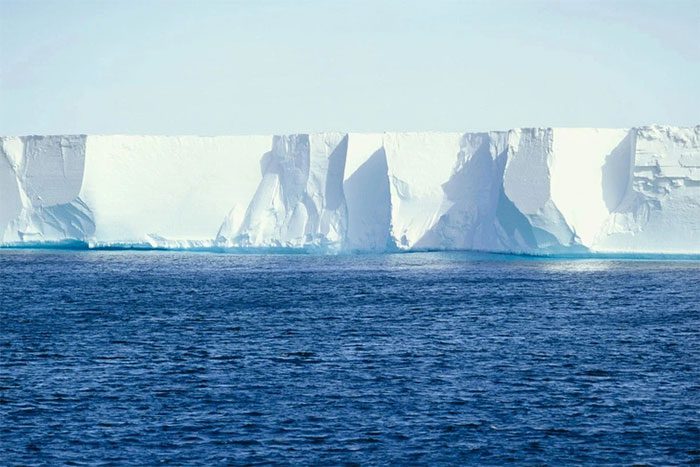According to SciTechDaily, the activity of the ice streams has caused the Ross Ice Shelf in Antarctica to shift unexpectedly.
In Antarctica, the massive glaciers are continuously moving. Ice streams, functioning like conveyor belts, accelerate the movement, transporting most of the ice and sediment debris from these vast glaciers toward the ocean.
According to new research from Washington University in St. Louis, one such ice stream has pushed the entire Ross Ice Shelf out of position at least once a day. This finding is significant due to the sheer size of the Ross Ice Shelf. It is the largest ice shelf in Antarctica, comparable in size to France.

The Ross Ice Shelf is a floating ice sheet that extends out into the ocean from glaciers deep in Antarctica – (Photo: SciTechDaily).
Doug Wiens, the Robert S. Brookings Distinguished Professor of Earth, Environmental, and Planetary Sciences, stated: “We discovered that the entire ice shelf suddenly moves about 6 to 8 centimeters one or two times a day, caused by an ice stream flowing into the shelf. These sudden movements may contribute to earthquakes and cracks in the ice shelf.”
The Ross Ice Shelf is a floating ice sheet that extends out to the ocean from glaciers located deep within Antarctica. Scientists are interested in the interaction between the ice shelf and the ice streams, partly due to concerns about the stability of the ice shelves in a warming world.
The new study, published in the journal Geophysical Research Letters, focused on the movements caused by the Whillans Ice Stream, one of about half a dozen major, rapidly moving glaciers that flow into the Ross Ice Shelf.
“Humans would not detect the movement of the ice shelf just by feeling it. The movement occurs over a period of a few minutes, so it cannot be recognized without measuring equipment,” Wiens explained.
“Previously, I had published several papers on sliding events at the Whillans Ice Stream, but until now, I had not observed the entire Ross Ice Shelf moving,” Wiens noted.
Researchers do not believe that these sliding events are directly related to human-induced global warming. One hypothesis suggests that the phenomenon occurs due to a loss of water in the Whillans Ice Stream, making it more “sticky.”
Sea levels will rise further as the ice shelves collapse Ice shelves serve as a brake for glaciers and ice streams, slowing their journey to the sea—where they melt—thus allowing more ice to accumulate on land. If an ice shelf collapses, the “brake” will disappear, and glaciers could flow more freely and quickly. Once they flow into the ocean, they contribute to rising sea levels. Studies on ice streams over the past 50 years have shown that some ice streams are accelerating while others are slowing down. Scientists can use seismometers to detect sudden movements of ice streams, helping to understand what drives these movements. |




















































